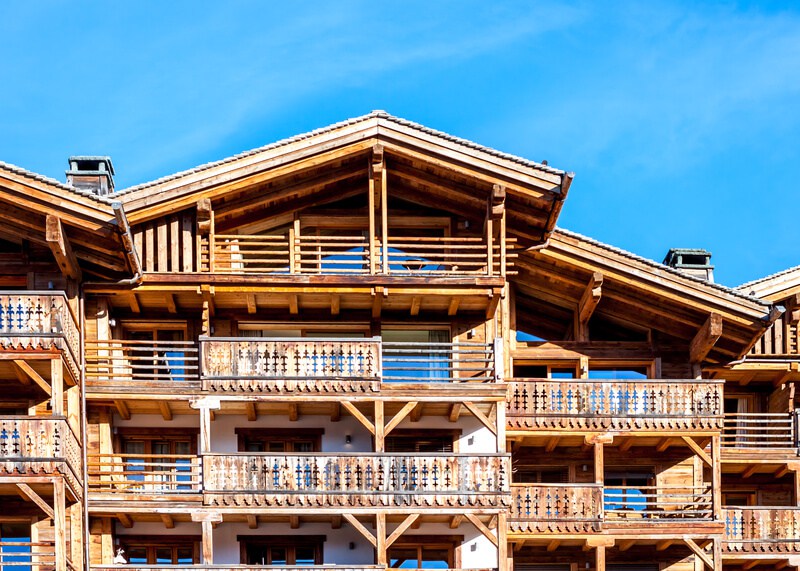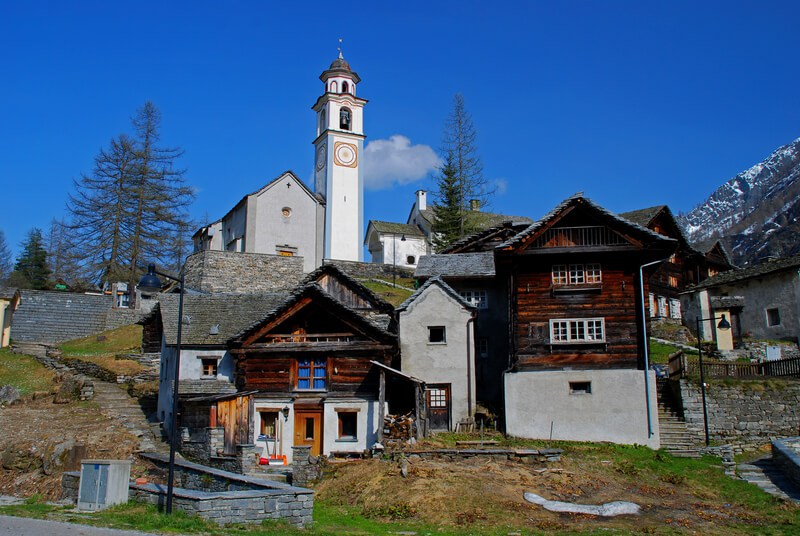On 11 March 2012, Swiss voted to accept a law restricting the construction of secondary residences, homes that are only used occasionally by owners living somewhere else. Under the law no more than 20% of a municipality’s housing can be second homes. Those with percentages above 20% run into building restrictions. The initiative was nick named Lex Weber after one of the main figures behind the initiative, the environmentalist Franz Weber. Chalet apartments in Verbier – © Chechotkin | Dreamstime.com Every year on 31 March, the Swiss Federal Office for Spatial Development (ARE) publishes an inventory of municipalities and their share of second homes. This year 421 out of 2,255 communes exceeded the permissible 20% share of second homes. Most of these communes are in cantons home to Switzerland’s major ski resorts. More than 80% of the 421 communes exceeding the 20% threshold were spread across the cantons of Graubunden (86), Valais (91), Ticino (80), Bern (49) and Vaud (37). The map below shows these municipalities in red. The three cantons with the greatest percentages of second homes were Graubunden (46.8%), Valais (40.5%) and Ticino (30.3%). Unsurprisingly, these three cantons had the largest number of municipalities, the geographic unit that matters, over the 20% threshold. In fact Graubunden had eight communes where the percentage of second homes was over 75%.
Topics:
Investec considers the following as important: Editor's Choice, environment, Property, Second homes Switzerland
This could be interesting, too:
Investec writes The global brands artificially inflating their prices on Swiss versions of their websites
Investec writes Swiss car insurance premiums going up in 2025
Investec writes The Swiss houses that must be demolished
Investec writes Swiss rent cuts possible following fall in reference rate
On 11 March 2012, Swiss voted to accept a law restricting the construction of secondary residences, homes that are only used occasionally by owners living somewhere else. Under the law no more than 20% of a municipality’s housing can be second homes. Those with percentages above 20% run into building restrictions. The initiative was nick named Lex Weber after one of the main figures behind the initiative, the environmentalist Franz Weber.

Chalet apartments in Verbier – © Chechotkin | Dreamstime.com
Every year on 31 March, the Swiss Federal Office for Spatial Development (ARE) publishes an inventory of municipalities and their share of second homes.
This year 421 out of 2,255 communes exceeded the permissible 20% share of second homes. Most of these communes are in cantons home to Switzerland’s major ski resorts.
More than 80% of the 421 communes exceeding the 20% threshold were spread across the cantons of Graubunden (86), Valais (91), Ticino (80), Bern (49) and Vaud (37). The map below shows these municipalities in red.
The three cantons with the greatest percentages of second homes were Graubunden (46.8%), Valais (40.5%) and Ticino (30.3%). Unsurprisingly, these three cantons had the largest number of municipalities, the geographic unit that matters, over the 20% threshold. In fact Graubunden had eight communes where the percentage of second homes was over 75%. Valais had six like this and Ticino had eleven. In 2012, voters in these three canton rejected the federal initiative to restrict the construction of second homes, however because it passed at a federal level it was imposed on them against their will.
The commune with the highest percentage of second homes was Campo (Vallemaggia), a municipality in Ticino. 88.7% of its 283 dwellings were secondary residences. Neighbouring Bosco/Gurin (85.9%) was not far behind.

Anybody at home? Bosco Gurin in Ticino – © Dariya64 | Dreamstime.com
Well-known Swiss resorts, such as Verbier (59%), Crans Montana (62%), Zermatt (56%), St. Moritz (55%), Davos (56%), were unsurprisingly all well over the 20% mark.
At the other end of the spectrum were the cantons of Zug (8.6%), Aargau (9.0%) and Basel Landschaft (9.0%), all with less than 10% second homes. Zug and Aargau had no municipalities with too many second homes. Basel Landschaft had one.
Switzerland’s main urban municipalities, Zurich (12%), Geneva (15%), Basel (12%) and Lausanne (12%) all had relatively low second-home percentages.
There are a few surprises. For example some communes near Vevey, like Chardonne and Montreux, exceed 20%.
Any commune breaching the 20% mark has until the end of April to respond. After that date ARE will decide whether restrictions apply.
More on this:
ARE press release on secondary residences (in French) – Take a 5 minute French test now
